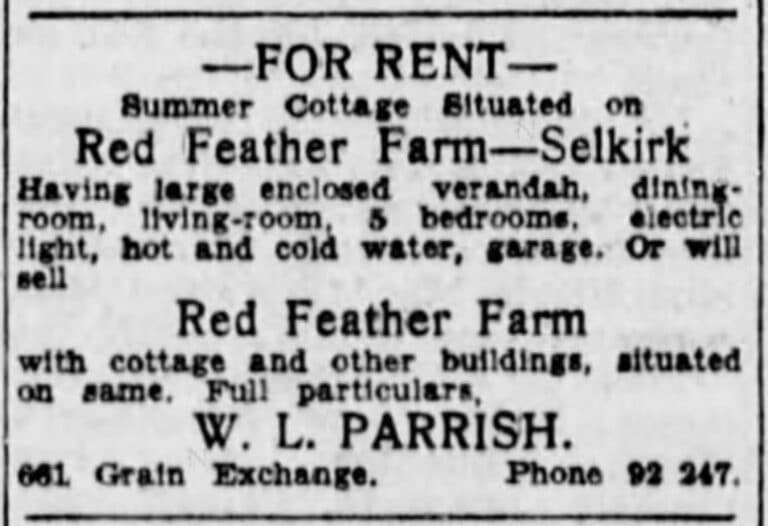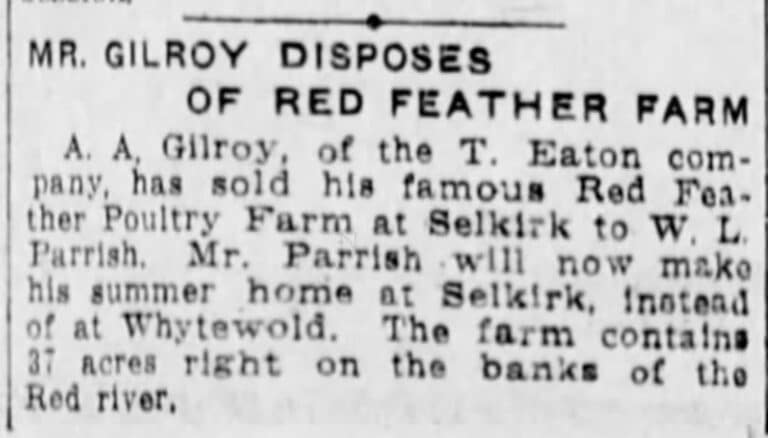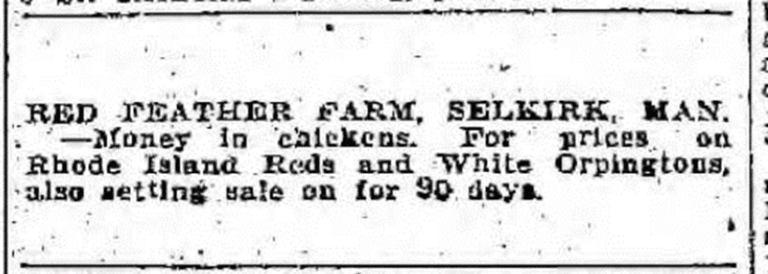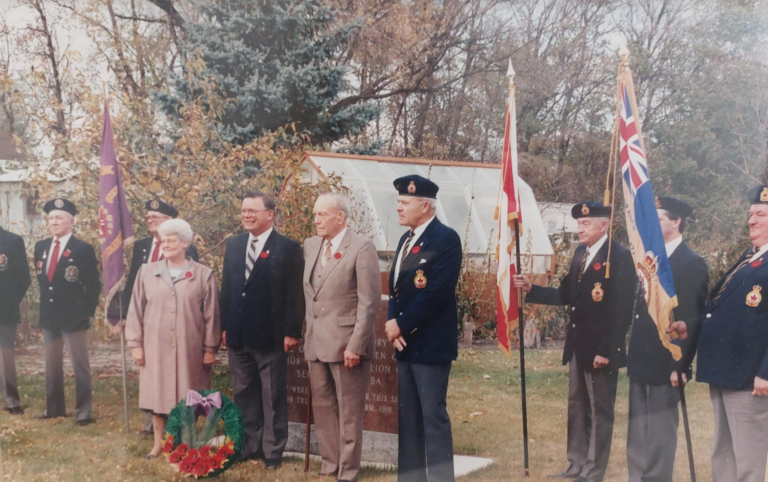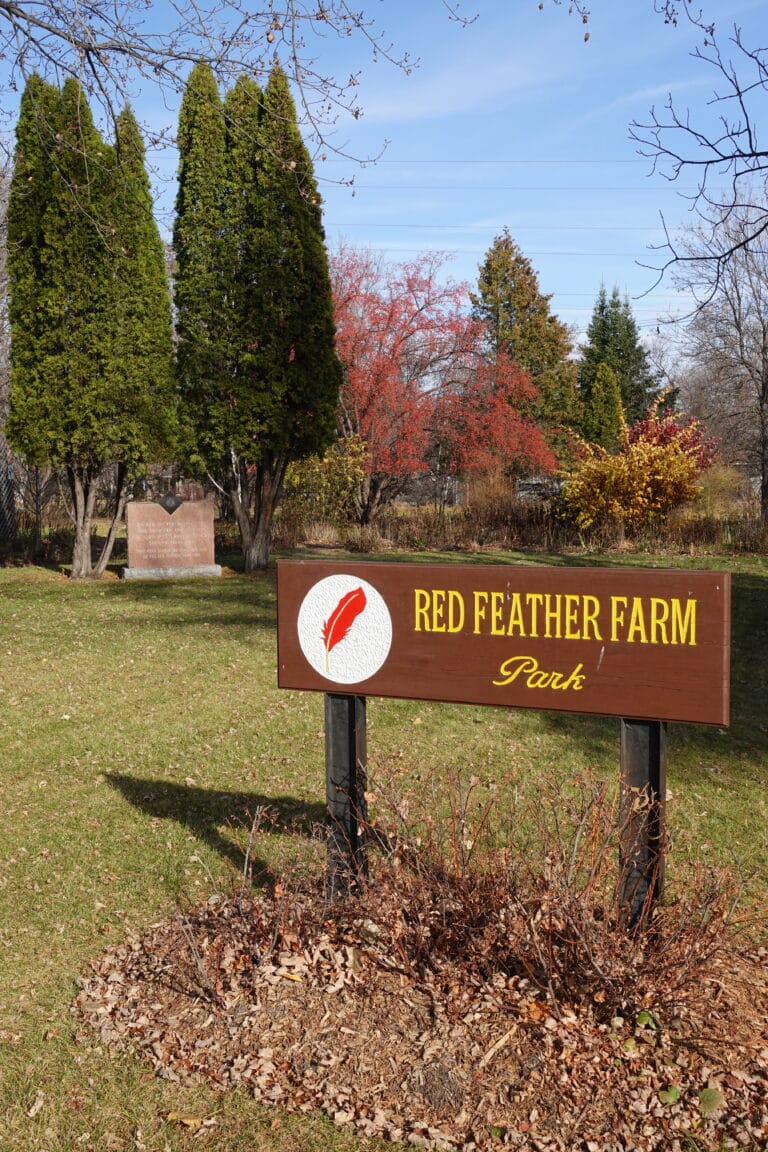163 Edstan Place
As its name suggests, this park was once part of a 37-acre farm with a storied history created by A. A. Gilroy.
Gilroy came to Manitoba from Ontario in 1905 as a senior executive with the T. Eaton Company. At the time he started the farm, he was also president of the Manitoba branch of the Canadian Industrial Exhibition which was held annually in Winnipeg. He was a well-respected horseman and past president of the Winnipeg Horse Show Association, described in one newspaper as being considered one of the best amateur drivers and judges of horseflesh in Canada.
In May 1911, Gilroy purchased land in Selkirk to build a suburban summer home and poultry ranch. The home and ranch were built just south of the park in Daerwood Village. A June 24, 1911 Winnipeg Free Press story noted that the site “is being rapidly transformed, a force of scores of workmen being constantly engaged upon it.”. Advertisements for Red Feather Farm can be found in Winnipeg papers starting in May of 1913 selling chickens, particularly Rhode Island Reds and White Orpingtons.
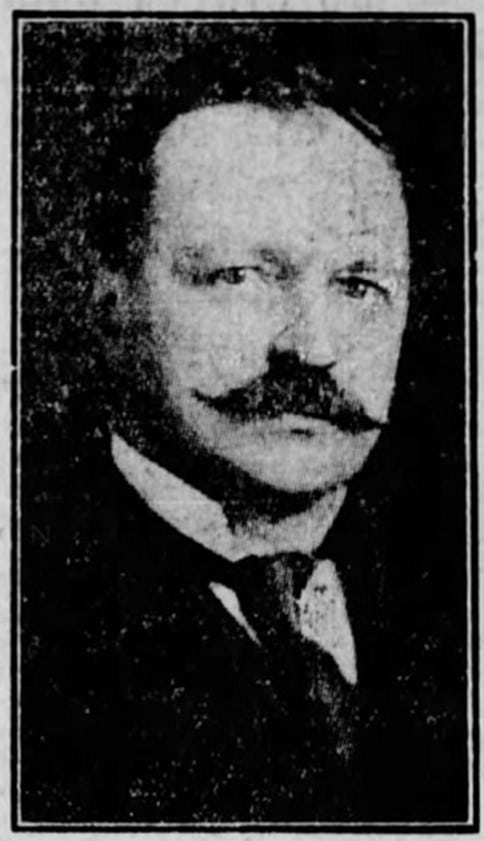
A New Purpose
It was announced in June of 1913 that Gilroy had sold the farm to W. L. Parrish of the grain firm Parrish and Heimbecker. His family used it as a summer home and it is unclear if the poultry farm continued, as the brooder house burned to the ground in June 1914.
One of Parrish’s daughters, Alice, held her wedding at the farm in June 1914. It was reported that the spacious lawns were beautifully decorated for the occasion with bunting, wildflowers and potted plants.
The next time Red Feather Farm made the news was for very different reasons. Parrish had turned the property over to the War Department for use as a military barracks. What made the property appealing (apart from its size) were the former chicken barns that could be converted into military barracks.
One newspaper story described the chicken barns as being 350 feet (106.7 metres) long and 16 feet (5 metres) wide, and could hold 188 bunks each. To accomplish this, the interior ceiling was removed. Stoves and chimneys were added for heat and scores of windows were installed for ventilation. The military built a separate cookhouse/dining hall and latrine building on the site and the five-bedroom house was used as the officers’ quarters.
The men who called Red Feather Farm home were the 108th Selkirk & Manitoba (Reinforcing) Battalion that was raised in November 1915 under Lieutenant-Colonel G.H. Bradbury. Bradbury, 56, was a veteran of the 1885 North West Rebellion and helped establish the Manitoba Brick Company at Selkirk in 1906. He also served and the Member of Parliament for the district from 1908 to 1917.
The battalion took on the nickname the Cocks, or Roosters. They even went so far as to having their original, government-issue badge redesigned by Dingwall’s Jewelers in Winnipeg to feature a fighting cock insignia.
The battalion went overseas to fight in the First World War in September 1916 with 32 officers and 843 soldiers. There, it was absorbed into the 14th Reserve Battalion in January 1917.
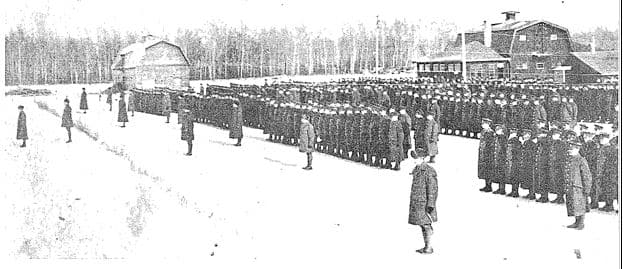
Post War
After the war, the property was given back to the Parrish family. They continued to use it as their summer home until 1937 when they began renting it out as a summer getaway. It was described in ads as a 36-acre lot featuring a five-bedroom house with enclosed verandah, large living and dining rooms, electric lights, and hot and cold running water.
The property was broken up over time. At a 1953 council meeting, a resident of Eveline Street asked that his water service be removed from the same system serving the remainder of the old Red Feather Farm.
In December 1969, Otto and Ellen Gebhart bought what was left of Red Feather Farm. It was described as a house, which had been stuccoed on the outside and the roofline altered, on three quarters of an acre of land.
Gebhart, a carpenter trained in Germany, with his wife and five children set about a multi-year restoration of the home. They lived there until at least 1989.
In 1977 when a residential development took place on some of the former farmland, a city-owned green space was left over. June Minish, founder of the Selkirk and District Horticultural Society, and her husband Albert started a garden on land that was once part of Red Feather Farm.
That site has since become known as Red Feather Farm Memorial Park. It features a information plaque and a memorial dedicated to the 108th funded from the estate of William Hall.
Red Feather Farm Collection
Sources
Canadiansoldiers.com
Selkirk Journal 1989, 2010
Selkirk the First Hundred Years, Barry Potyondi
Winnipeg Free Press 1913,
Winnipeg Tribune 1913, 1938


